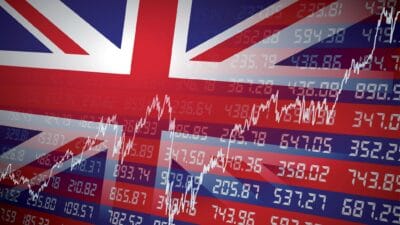The price-to-earnings (P/E) ratio is undoubtedly the valuation measure most widely used by financial commentators and private investors. But there are P/E pitfalls that can lead you astray.
Three different mistakes to avoid can be illustrated by the cases of Smith & Nephew (LSE: SN), BHP Billiton (LSE: BLT) and Tungsten (LSE: TUNG).
Smith & Nephew
Medical devices firm Smith & Nephew headlines its results with an “adjusted” earnings-per-share (EPS) number. This excludes “exceptional” or “one-off” items. Most companies do this (analyst forecasts are also made on the same basis), and it’s the adjusted EPS number that typically becomes the “E” in our P/E calculations.
Should you invest £1,000 in Balfour Beatty Plc right now?
When investing expert Mark Rogers has a stock tip, it can pay to listen. After all, the flagship Motley Fool Share Advisor newsletter he has run for nearly a decade has provided thousands of paying members with top stock recommendations from the UK and US markets. And right now, Mark thinks there are 6 standout stocks that investors should consider buying. Want to see if Balfour Beatty Plc made the list?
Smith & Nephew reported adjusted EPS of 83.2¢ (about 53.7p) in its latest annual results, giving a P/E of 22 at a share price of 1,180p. However, if you look at those results, you’ll see that “restructuring & rationalisation costs” are one of the things the company excludes from its adjusted EPS. The trouble is that this “exceptional” item has appeared in Smith & Nephew’s results every year for the last 10 years bar one. It’s not really a one-off is it?
The $46m (5.2¢ per share) of costs the company reported this year is about average. If we treat these costs simply as a normal feature of the business, Smith & Nephew’s already high P/E of 22 (compared with 16.7 for the FTSE 100 as a whole) goes up even higher — to 23.5.
P/E pitfall: hidden recurring “one-offs” can lead your valuation astray.
BHP Billiton
If you look at BHP Billiton’s last annual results, you’ll find the company posted EPS of 252.7¢ (about 163p), giving a P/E of 9.8 at a share price of 1,600p. If you then go to the last annual results of Billiton’s big rival Rio Tinto, you’ll find Rio posted EPS of 503.4¢ (about 325p), giving a P/E of 9.7 at a share price of 3,150p.
Not much to choose between them, right? The trouble is Billiton has a 30 June financial year end, while Rio and all the other big Footsie miners have 31 December year ends. Rio’s P/E of 9.7 for the year ending 31 December 2014 is fine, but to compare Billiton on a meaningful basis, we need to take the latter’s EPS from the second half of its financial year ending 30 June 2014 and add it to the EPS for the first half of the year to 30 June 2015.
Doing the calculation produces EPS of 207.5¢ (about 134p), giving Billiton a P/E of 11.9. On a like-for-like basis, then, Billiton’s earnings rating is a good bit higher than Rio’s. You also need to go through a similar process of adjustment when calculating the two companies’ P/Es from analyst forecast earnings (although you may want to wait until the analysts have updated their forecasts after Billiton’s half-year results today.)
P/E pitfall: different company financial year ends can lead your comparative valuation astray.
Tungsten
Analyst earnings forecasts for the next two or three years are widely available on financial websites. Most of us look at forward P/Es — probably more so than trailing P/Es.
One often-overlooked point when using forward P/Es is illustrated by AIM-listed Tungsten. This company, which is a leading global B2B e-invoicing network, whose customers include Tesco, GlaxoSmithKline and Unilever, isn’t making a profit yet. However, the firm is forecast to deliver positive EPS in its financial year to 30 April 2017, giving a P/E of 12 at a share price of 170p.
But let’s remind ourselves of exactly what a P/E is. The number represents how many years it would take for EPS to total the share price we paid (if EPS stayed the same).
In Tungsten’s case, we have a P/E of 12, but if we invest today, it’s not 12 years (to 2027) for EPS to equal our share price. The company, remember, is not yet profitable, so the clock doesn’t start ticking until 2017. It would be 2029 for EPS to equal our share price — 14 years, and thus effectively putting Tungsten on a P/E of 14.
P/E pitfall: you could be paying a higher valuation than you may think when using forward earnings.







